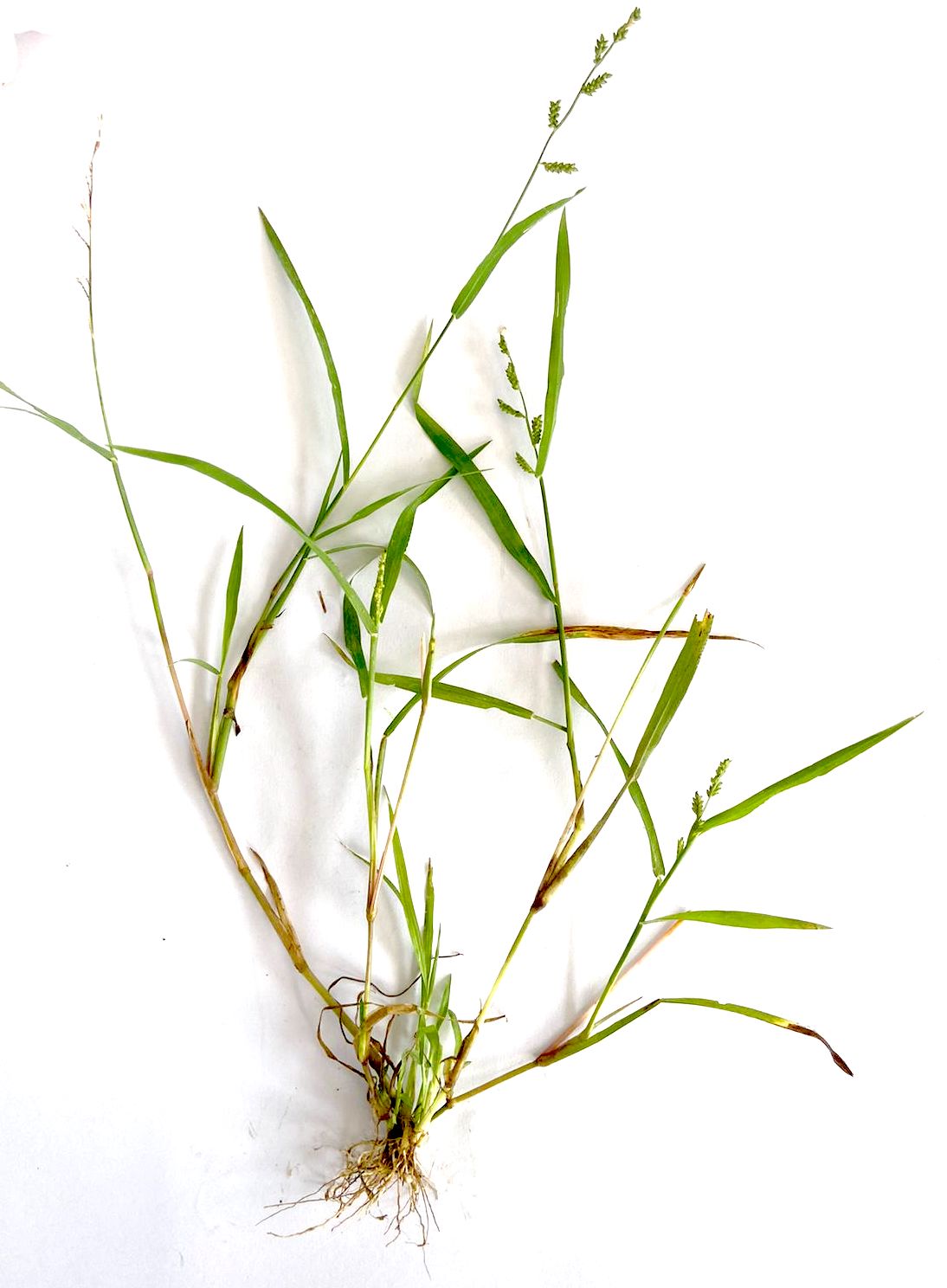

Identification Notes


EPPO CodeECHCO |
Life CycleAnnual |
MorphologyCulm: Smooth, glabrous, tufted, decumbent usually swollen at and branched from the basal nodes. Leaves: Linear – lanceolate, blade 6-15 cm long, margins scabrous, sheath slightly keeled, shorter than internodes. Inflorescence : A panicle, racemosely arranged, short spikes, green to purple in colour, glabrous. Fruit: A caryopsis. |
Growing seasonRabi and Kharif |
Germination periodJanuary to December |
Flowering periodJanuary to December |
PropagationBy Seed |
HabitatFound in association with aus rice, jute, broadcast aman rice, wheat and other winter crops. Also found in the levee of crop fields and irrigation channel, homesteads, roadsides, and fallow lands. |
Weed potentialAn important crop weed throughtout the tropics and subtropics and has become one of the world's most serious grass weeds (Holm et al 1991; Rao et al 2007). It is an important weed not only of rice crop but also sugarcane, cotton, maize, etc. It is mostly present at the middle and at the end of cultural cycle. Because it resembles rice in the seedling stage it is sometimes transplanted into the fields with the crop. This weed is an excellent competitor and if rice culture is badly managed the crop may be forced out by increasing numbers of this weedy plant. This weed is also an alternate host of diseases, insects, and nematodes (Holm et al. 1991). |
Control measureCultural control : cultivation during early growth can control the weed. Manual control is difficult in the early stages. Biological control : In Japan, the pathogen Exserohilum monoceras is being evaluated as a bioherbicide for control of Echinochloa species in rice. In the Philippines, E. monoceras killed seedlings of E. colona but did not affect rice. |
Recommended herbicidePre-emergence application of butachlor at 1.5 kg a.I/ha, Anilophos at 400 g/ha, Pretilachlor at 1.0 kg/ha, Pendimethalin at 1.5 kg/ha |
DistributionIt is widely distributed in tropics and subtropics, including South and Southeast Asia and tropical Africa (common in moist upland, hydromorphic and poorly flooded, lowland rice). |
Medicinal propertiesOften used in times of food shortage as a famine food. In Chad (central) and Sudan (Kordofan, Darfur) the seeds of this plant are ground into flour from which porridge or bread can be prepared. In Rajasthan in India the seeds are used as rice - hence its English common name of 'jungle rice', from the Hindustani jangal, meaning wild. Indian barnyard millet (Echinochloa frumentacea), a cultivated crop in India, was domesticated from E. colona. |
ReferencesHolm, L.G., Plucknett, D.L., Pancho, P.V., Herberger, J.P., 1991. The world's worst weeds: distribution and biology. University Press, Hawaii, USA. 609p Rao, A. N., D. E Johnson, B. Sivaprasad, J. K. Ladha and A. M. Mortimer. 2007. Weed management in direct-seeded rice. Adv. Agron. 93:153-255. |